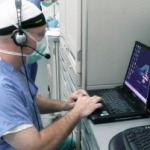 Payers and providers need efficient administrative services for profitability. The number of claims slowed by lack of/incomplete/poor EHR documentation became crystal clear in recent reports.
Payers and providers need efficient administrative services for profitability. The number of claims slowed by lack of/incomplete/poor EHR documentation became crystal clear in recent reports.
Researchers at University of California San Francisco took a look at thousands of progress notes, written by nearly 500 clinicians over eight months in UCSF Medical Center’s inpatient Epic EHR.
“More than 80 percent of the notes were imported or copied from elsewhere.” “…copying or importing text increases the risk of including outdated, inaccurate, or unnecessary information, which can undermine the utility of notes and lead to a clinical error.” JAMA Intern Med. Published online May 30, 2017. doi:10.1001/jamainternmed.2017.1548
“More than 80 percent of the notes were imported or copied from elsewhere.” – JAMA Intern Med. Published online May 30, 2017
EHR Documentation Study
The National Institute of Standards and Technology (NIST) recently published findings from an EHR usability study of copying and pasting clinical documentation.
“‘Copy and paste’ functionality is intended to allow medical practitioners to easily and efficiently reuse information in patient EHRs without having to retype the information,” the authors write. “However, in practice, current implementation of this functionality has introduced overwhelming and unintended safety-related issues into the clinical environment.”
Cassandra Andrews Jackson, compliance officer and HIPAA privacy officer for SBH Health System in New York City, on an HCCA webinar said when entries are copied and pasted without being edited, this doesn’t meet medical-necessity requirements for Medicare coverage because documentation isn’t specific enough to the patient and his or her experience (RMC 3/25/13, p. 1). “It will lead to denial of services and recoupment,” she said.
United States Department of Health and Human Services Office of Inspector General (HHS-OIG) identifies “illegitimate use of cut-and- paste record cloning” as a problem.
HHS-OIG’s 2016 Compendium of Unimplemented Recommendations found that only about one-fourth of hospitals had policies governing the use of the copy-paste function in EHR software. Defaulting or copying and pasting clinical information from different health care records of the same patient facilitates billing at a higher level of service than was actually provided. For example, in a summary of one company’s recent self-disclosure settlement, HHS-OIG said the EHR contained cloned patient progress notes and that they upcoded several services.
The most common is copying information from a previous encounter and pasting it as current documentation. Other names for Copy/Paste are ‘cloning’ and ‘carrying forward’. Some EHR systems are designed to facilitate cloning with such popular features as
- “make me the author”
- to assume the content of another person’s entry,
- “demo recall”
- to copy forward vital signs,
- “copy and paste”
- to replicate information from a previous visit,
- “smart phrases”
- a function that pulls in specific identical data elements.
- Automated insertion of previous or outdated information through EHR tools, when not modified to be patient-specific and pertinent to the visit, may raise significant quality of care and compliance concerns—creating a potential for medical liability issues.
- Cloning Risks include:
- Vital signs that never change from visit to visit
- Information “copied and pasted” from a different patient’s record
- Documentation from another provider including their attestation statement
- Identical verbiage used repeatedly for all patients seen by a provider for a specific timeframe with little or no modification regardless of the nature of the presenting problem or intensity of the service; at times, such verbiage includes contradictory indications (i.e., use of pronoun “he” instead of “she,” indication that patient has no pain when the documentation includes a record of pain)
- Providers must recognize that every patient is unique and must ensure that the health service provided is documented distinctly from all others.
- Dictation Errors without Validation
BHM’s understands the challenges with documentation. Click HERE to learn more about how BHM helps your organization recognize documentation issues.
